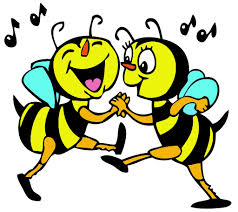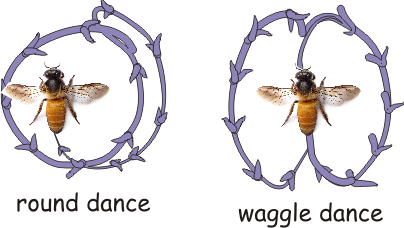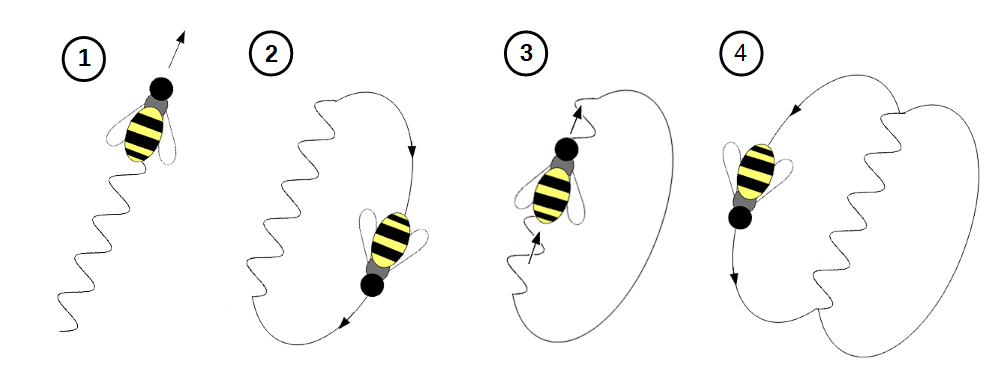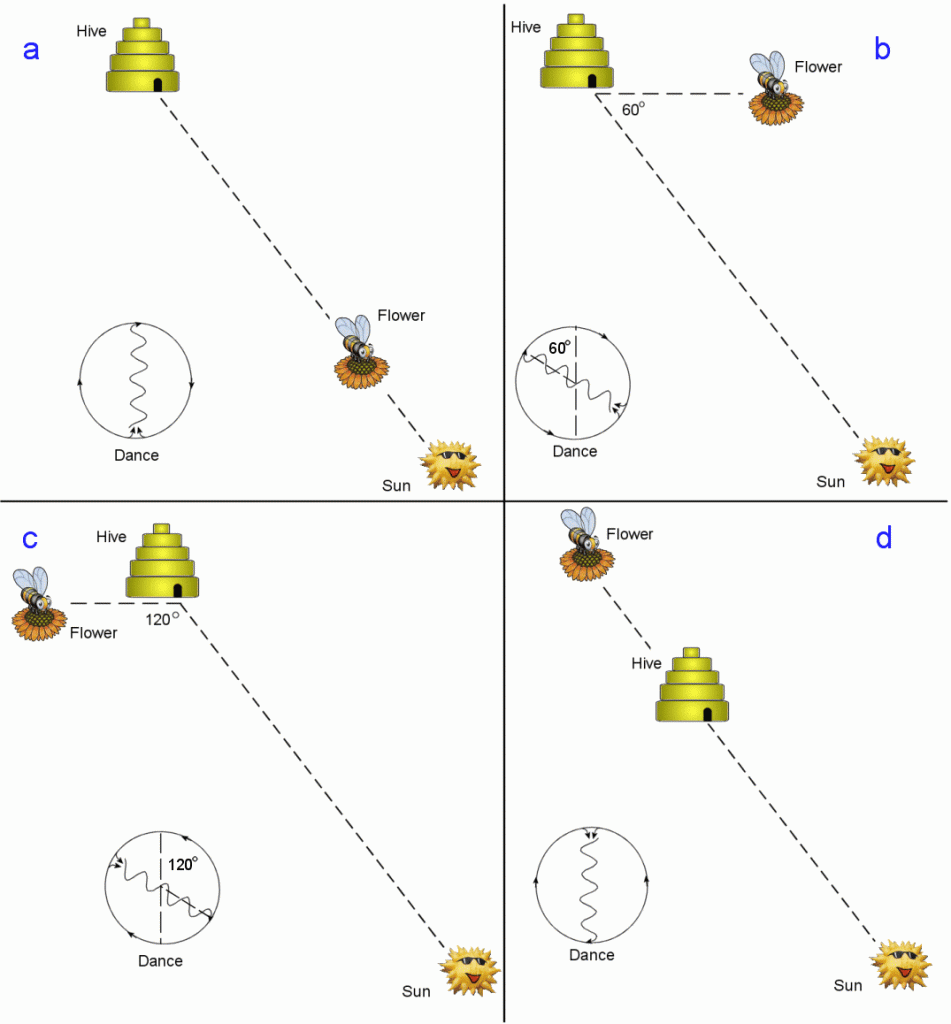
BPH 101- THE BEE
BEE DANCE; A Means of Communication.
Good day friends, its nice meeting you again. I am sure you’ve been having fun learning a lot about the bee. And once again I am Bee Royal. Let’s do a quick revision of our last lesson.
Reviewing our last lesson I explained how we bees fly and remember “According to all known laws of aviation, there shouldn’t be anyway by which a bee should be flying. Its wings are too small to get its fat little body off the ground. The bee, of course, flies anyways. Because bees don’t care what humans think is impossible.” Well, thanks to science, it has been discovered how we carry out this act. And most of our activities are carried out during a flight including mating!!! Another of such is dancing, which will lead us to today’s topic.; “The Bee Dance”. It will be amazing to know that dancing is one of the major ways we communicate. It is more than just an exercise. Let’s find out more.
Bee Dance

Among God’s wondrous creation, the honeybee has provided startling evidence against evolution, and for design and purpose by the Creator. The precisely coordinated language used for the bee’s survival has too many necessary and independent parts for such a system to have evolved. We are forced by logic and common sense to conclude that the whole process was implanted in bees at the time of their creation. Like the bees, it did not and could not evolve.
Like humans, bees are also involved in teamwork, this is necessary because there is the need to gather enough pollen and nectar to feed over 500,000 bees in a colony and to store enough for winter within the short period they have, therefore communication is key.
As we already know honeybees can’t talk, so they perform special dances as a means of communication. This has several advantages one of which is to relay different messages to quickly mobilize a large number of foragers to gather floral resources that may only be available for a short period and also to communicate when the need to swarm arises.
Since we have been able to establish why the honey bees dance, which are;
– To tell a swarming colony about the location of a potential new home.
– To communicate to its sisters the distance and location of food and also water.
Let’s consider how they dance and what information is passed around when they dance.
The honey bee has two types of dance;
- The round dance
- The waggle dance/ the tail-wagging dance.

Each dance has its specific information.
When an experienced forager returns to the colony with a load of nectar or pollen that is sufficiently nutritious to warrant a return to the source, she dances on the surface of the honeycomb. To tell other foragers where the food is. The dance shows the direction of the flowers relative to the sun, and the bees automatically adjust the dance according to the changing position of the sun in the sky. The speed of the dance indicates how far the nectar is from the hive.
The dancer “spells out” two items of information—distance and direction—to the target food patch. Recruits then leave the hive to find the nectar or pollen.
The honey bee dance will be ‘round’ if the food source is close to the nest or hive. Interestingly, the closer the source of food, the more cycles performed. The round dance does not give directional information. In this dance, the bee walks in a circle, turns around, then walks the same circle in the opposite direction. She repeats this many times. Sometimes, the bee includes a little waggle as she’s turning around. The duration of this waggle is thought to indicate the quality of the food source she has found. Bees recruited into foraging after a round dance flies out of the hive in all directions searching for the food source they know must be there. Additionally, the scout bee leaves odour from its scent gland on the flower that helps guide the recruits. When they find a great source of nectar, they dance back at the hive to tell other bees where to find the flowers.

Round dance
Where the round dance gives only one information which is the closeness of the food source, the waggle dance tells the watching bees two things about a food source location: the distance and the direction away from the hive. Distance and direction are presented in separate components of the dance. As the food source becomes more distant the round dance is replaced by the waggle dance. A bee that is performing a waggle dance runs straight ahead for a short distance, returns in a semicircle to the starting point, runs again through the straight course, then makes a semicircle in the opposite direction to complete a full figure-eight circuit. While running the straight-line course of the dance, the bee’s body, especially the abdomen, wags vigorously from side to side. This vibration of the body produces a tail-wagging motion.

The waggle dance also includes information about the energy required to fly to the goal. Energy expenditure (or distance) is indicated by the length of time it takes to make one circuit. For example, a bee may dance 8-9 circuits in 15 seconds for a food source 200 meters away, 4-5 for a food source 1000 meters away, and 3 circuits in 15 seconds for a food source 2000 meters away.
The direction of the food source is indicated by the direction the dancer faces during the straight portion of the dance when the bee is waggling. If she waggles while facing straight upward, then the food source may be found in the direction of the sun. If she waggles at an angle 60 degrees to the left of upward, the food source may be found 60 degrees to the left of the sun. Similarly, if the dancer waggles 120 degrees to the right of upward, the food source may be found 210 degrees to the right of the sun. The dancer emits sounds during the waggle run that helps the recruits determine the direction in the darkness of the hive. In summary, an upward tail wagging means ‘go toward the sun’. A downward ‘run’ means ‘fly away from the sun’.

Because the sun changes position through the day, the honey bee has to take this into account and change the angle of the dance as well! Clouds, tall buildings, trees or other obstacles obscuring the sun require the bee to use her knowledge of ultra-violet light and polarization by analyzing the intensity of light.
It is believed that information about the type of plant, the quality and quantity of nectar to be found, maybe conveyed to the other bees by the subtle fragrance of the flower carried on the honey bee’s body. Her sisters can pick up this information through their sensitive antennae.
The clever honey bee will even take into account the amount of wind! A strong headwind will cause the bee to dance as if the food was further away, thus indicating that more energy will be expended to reach this source of food.
The honey bee dance was first decoded by Austrian ethologist Karl von Frisch in 1967.
References